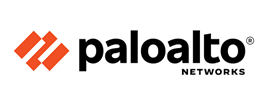- Course overview
- Course details
- Prerequisites
Course overview
About this course
Cloud Storage with Red Hat Ceph Storage (CL260) is designed for storage administrators and cloud operators who deploy Red Hat Ceph Storage in a production data center environment or as a component of a Red Hat OpenStack Platform or OpenShift Container Platform infrastructure. Learn how to deploy, manage, and scale a Ceph storage cluster to provide hybrid storage resources, including Amazon S3 and OpenStack Swift-compatible object storage, Ceph-native and iSCSI-based block storage, and shared file storage.
This course is based on Red Hat Ceph Storage 5.0.
Audience profile
- This course is intended for storage administrators and cloud operators who want to learn how to deploy and manage Red Hat Ceph Storage on servers in an enterprise data center or within a Red Hat OpenStack Platform or OpenShift Container Platform environment.
- Developers writing applications that use cloud-based storage will learn the distinctions of various storage types and client access methods.
At course completion
You will be able to:
As a result of attending this course, students will be able to deploy, operate, and manage a Red Hat Ceph Storage cluster. Students will learn why Red Hat Ceph Storage is the standard, integrated cloud storage solution for Red Hat Cloud Platforms. Developer students will learn to implement each available storage type and method offered by Red Hat Ceph Storage, and be able to choose the correct type and method for their enterprise storage scenarios and applications. Administrators and operators will be able to perform Ceph cluster management, including configuration, daily operations, troubleshooting, performance tuning, and scaling.
Course details
Introducing Red Hat Ceph Storage architecture
- Describe Red Hat Ceph Storage architecture, including data organization, distribution and client access methods.
Deploying Red Hat Ceph Storage
- Deploy a new Red Hat Ceph Storage cluster and expand the cluster capacity.
Configuring a Red Hat Ceph Storage cluster
- Manage the Red Hat Ceph Storage configuration, including the primary settings, the use of monitors, and the cluster network layout.
Creating object storage cluster components
- Create and manage the components that comprise the object storage cluster, including OSDs, pools, and the cluster authorization method.
Creating and customizing storage maps
- Manage and adjust the CRUSH and OSD maps to optimize data placement to meet the performance and redundancy requirements of cloud applications.
Providing block storage using RADOS Block Devices
- Configure Ceph to provide block storage for clients by using RADOS block devices (RBDs).
Providing object storage using a RADOS Gateway
- Configure Ceph to provide object storage for clients by using a RADOS Gateway (RGW).
Providing file storage with CephFS
- Configure Ceph to provide file storage for clients using the Ceph File System (CephFS).
Managing a Red Hat Ceph Storage cluster
- Manage an operational Ceph cluster using tools to check status, monitor services, and properly start and stop all or part of the cluster. Perform cluster maintenance by replacing or repairing cluster components, including MONs, OSDs, and PGs.
Tuning and troubleshooting Red Hat Ceph Storage
- Identify the key Ceph cluster performance metrics and use them to tune and troubleshoot Ceph operations for optimal performance.
Managing Cloud Platforms with Red Hat Ceph Storage
- Manage Red Hat cloud infrastructure to use Red Hat Ceph Storage to provide image, block, volume, object, and shared file storage.
Comprehensive review
- Review tasks from Cloud Storage with Red Hat Ceph Storage.
Prerequisites
- Become a Red Hat Certified System Administrator (RHCSA) or demonstrate equivalent experience
- If you are not a RHCSA, you can take a skill assessment to gauge your level of knowledge.
Enquiry
Course : CL260: Red Hat Ceph Storage for OpenStack
Enquiry
request for : CL260: Red Hat Ceph Storage for OpenStack




















